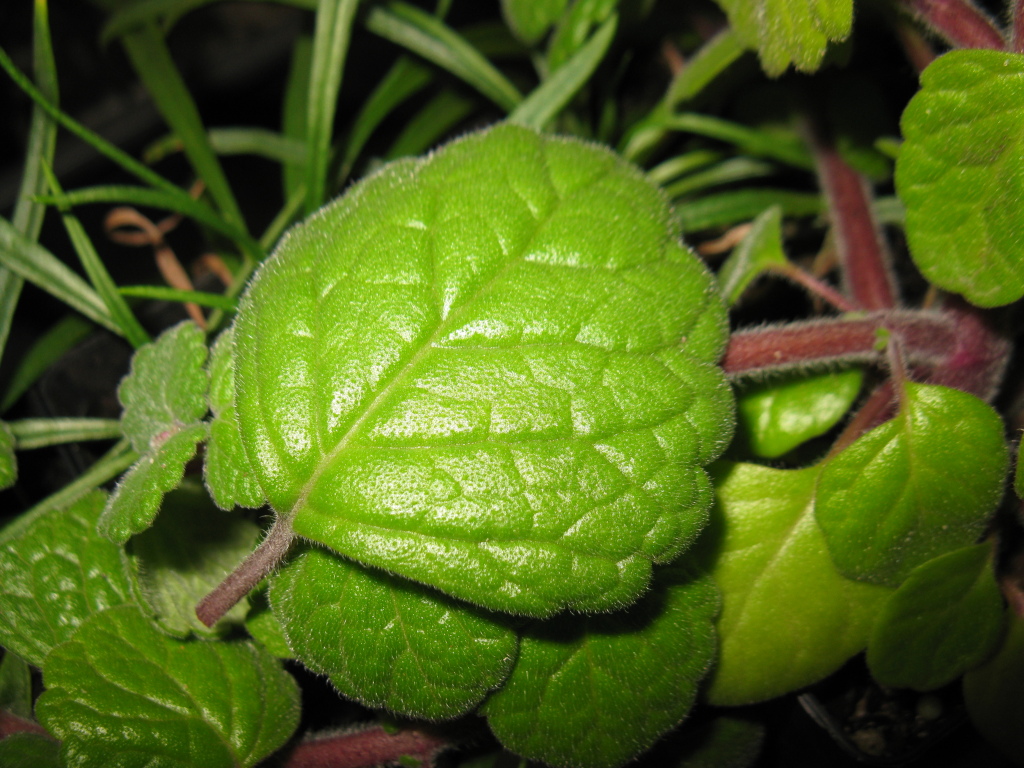Coleus graveolens
(R.Br.) A.J.PatonAromatic, sprawling to erect shrub, c. 50–150 cm high; branches dying away after flowering, usually with moderately dense, sessile and shortly stalked glands along the flower axes, with lower stems usually densely hispid to villous with eglandular, multicellular, spreading or retrorse hairs. Leaves elliptic to ovate, lamina 1.5–5 cm long, 1.5–3 cm wide, upper surface of mature leaves usually moderately densely and softly hispid, sometimes subglabrous; lower surface of mature leaves densely and softly hispid with hairs >1 mm long, often with shorter glandular hairs, particularly near veins, and also with sessile, reddish glands, apex obtuse, margin crenate to crenate-dentate with 8–12(–18) pairs of teeth; petiole 0.5–5 cm long. Bracts of developing inflorescence early deciduous, rhombic to orbicular, 1.5–3 mm wide. Calyx at anthesis 2–3 mm long (4.5–6 mm long in fruit); corolla 7–13 mm long, usually wholly purple, lobes shortly hispid and with sessile glands externally, tube decurved at an angle of 110°–140°. Seed lenticular, dark brown, shining, 1–1.2 mm diam. Flowers mainly late spring and summer.
VVP, GipP, EGL, EGU, HSF. Also Qld, NSW. Of scattered occurrence, usually in dry, often rocky forest and woodlands in Gippsland between the New South Wales border and near Licola, with outlying and very localised occurrences on basalt cliffs of the Leigh and Moorabool Rivers near Geelong.
The application of this name in Victoria is uncertain and plants here referred vary in habit and odour of the crushed leaves. Populations near Genoa comprise shrubby, to c. 1.5 m high plants, while stems of those on cliffs near Geelong are semi-succulent and rather weakly ascending. It is possible that plants under this name may belong to more than one species yet to be determined. It is also possible that the name, C. graveolens, should be restricted to plants in NSW and Qld only. Further study is needed.
Coleus graveolens (as here interpreted) and C. australis are sometimes co-extensive (e.g. along the Snowy and Mitchell Rivers) and hybrids may occur in these areas.
 Spinning
Spinning